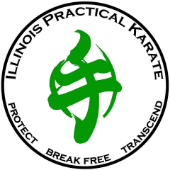Hikite (Pulling Hand) Usage
How do you approach hikite (pulling hand) usage?
7 members have voted
-
1. How is hikite used in your training?
-
Use it for power generation (structural concept/tradition)2
-
Use it to "set up" or "prepare" for techniques (structural concept/tradition)1
-
Use it as a chamber in kihon and kata, but don't apply it combatively (tradition)2
-
Use it for beginners, but drop it as students progress (tradition/modernization)0
-
Use it for pulling part of the opponent (combative)5
-
Use it for pulling hand free of entanglements (combative)1
-
Use it to elbow strike to the rear (combative)1
-



Recommended Posts
Create an account or sign in to comment
You need to be a member in order to leave a comment
Create an account
Sign up for a new account in our community. It's easy!
Register a new accountSign in
Already have an account? Sign in here.
Sign In Now